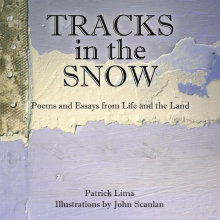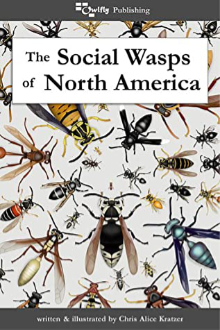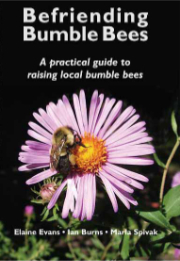Wonderful, glorious, stunning Catalpa
There is no more glorious sight in these parts than a Northern Catalpa in full bloom.
This week was the peak of flowering for this tropical tree that has adapted to our northern climate. The first clue is the fragrance wafting over the sidewalk. Like a bee seeking nectar, you follow the trail and come across a wonderful show - dense panicles of huge white frilly orchid-like blooms, their centres delicately highlighted with purple stripes and splashes of orange. A pollinator’s delight.
If you have a lawn, in full sun, in need of a “specimen” shade tree, this is the one. Its elegant form, its large heart-shaped leaves, the long bean pods that develop in fall, all ensure season-long interest after the dropped petals have carpeted the grass below in white.
I know of two Catalpas nearby, one in Elmvale and another to the south of the village, and I visited them both this week from the sidewalk, camera in hand. Then, wandering through little Lake Park in Midland, I saw a couple more. Simply wonderful.
The Northern Catalpa can be found all over eastern and central North America but it grows naturally south of the Great Lakes region, writes Henry Kock, the late Guelph Arboretum horticulturalist, in Growing Trees from Seed (Firefly, 2008). Its natural range extends from central Illinois to southern Indiana, south from northern Arkansas to western Tennessee. Kock gives it the nod as a fine yard tree, but notes that as it’s not an integral part of the flora that sustains the ecology of the Great Lakes watershed, it shouldn’t be used in naturalization projects here.
Some have questioned whether the Northern Catalpa is an invasive species outside of its natural range. Sue Sweeney deals with the issue in a 2005 article on the Ontario Trees and Shrubs website. She muses: “How come the Northern Catalpa is built to withstand the -30F temperatures in Montreal, if its original range was only in the southern Mississippi Valley? The Black Locust may be similarly situated. Many say the Black Locust (is) an invader in the Northeast, but geologists have found that Black Locust was here before the Ice Age. So, the Black Locust is only reclaiming its original territory. Is the same true of the Catalpa?”
I have yet to see thickets of Northern Catalpa displacing native species, so in my view this tree is a gift for gardeners who wish to draw from the North American palette. It’s a large tree, growing to 100 feet (30 metres) or more, that makes an imposing statement. It prefers a rich moist soil but is tolerant of a wide variety of soils provided drainage is good, it stands up to urban stresses, and is not prone to pests or disease.
In Arboretum America (University of Michigan Press, 2003), Diana Beresford-Kroeger argues that at a time of climate change, the Northern Catalpa extends nature’s food basket northward because of its bountiful flowers and fruit. The pattern of migration changes with global temperature fluctuations, she points out. “This is presently seen in European bird populations. Bird habitat is changing with an average temperature change of 3.6F (2C) per one hundred years. Catalpas will keep pace with the needs of moving bird and beneficial insect populations.”
Beresford-Kroeger notes that the timing of the bloom makes a Catalpa especially valuable to these populations, coming when the main flush of other flowers is over, and extending the season of protein-rich pollen and sugar for summer replacement broods.
She recommends White False Indigo (Baptisia leucantha) or White Foxglove (Digitalis purpurea ‘Alba’) as an underplanting that picks up the shape and colour of the Catalpa flowers.
I have a better idea, having noticed that the Foxglove Beardtongue (Penstemon digitalis) has also been at its best this week. It has similar panicles of white flowers, on sturdy 3-foot stems. (Husker Red is a widely available cultivar of the Foxglove Beardtongue.) I was delighted to find, having examined the bloom with my new favourite toy, a magnifying lens, that a very fine purple line marks the path from the lip of the flower into the heart – another echo of the Catalpa.
This week was the peak of flowering for this tropical tree that has adapted to our northern climate. The first clue is the fragrance wafting over the sidewalk. Like a bee seeking nectar, you follow the trail and come across a wonderful show - dense panicles of huge white frilly orchid-like blooms, their centres delicately highlighted with purple stripes and splashes of orange. A pollinator’s delight.
If you have a lawn, in full sun, in need of a “specimen” shade tree, this is the one. Its elegant form, its large heart-shaped leaves, the long bean pods that develop in fall, all ensure season-long interest after the dropped petals have carpeted the grass below in white.
I know of two Catalpas nearby, one in Elmvale and another to the south of the village, and I visited them both this week from the sidewalk, camera in hand. Then, wandering through little Lake Park in Midland, I saw a couple more. Simply wonderful.
The Northern Catalpa can be found all over eastern and central North America but it grows naturally south of the Great Lakes region, writes Henry Kock, the late Guelph Arboretum horticulturalist, in Growing Trees from Seed (Firefly, 2008). Its natural range extends from central Illinois to southern Indiana, south from northern Arkansas to western Tennessee. Kock gives it the nod as a fine yard tree, but notes that as it’s not an integral part of the flora that sustains the ecology of the Great Lakes watershed, it shouldn’t be used in naturalization projects here.
Some have questioned whether the Northern Catalpa is an invasive species outside of its natural range. Sue Sweeney deals with the issue in a 2005 article on the Ontario Trees and Shrubs website. She muses: “How come the Northern Catalpa is built to withstand the -30F temperatures in Montreal, if its original range was only in the southern Mississippi Valley? The Black Locust may be similarly situated. Many say the Black Locust (is) an invader in the Northeast, but geologists have found that Black Locust was here before the Ice Age. So, the Black Locust is only reclaiming its original territory. Is the same true of the Catalpa?”
I have yet to see thickets of Northern Catalpa displacing native species, so in my view this tree is a gift for gardeners who wish to draw from the North American palette. It’s a large tree, growing to 100 feet (30 metres) or more, that makes an imposing statement. It prefers a rich moist soil but is tolerant of a wide variety of soils provided drainage is good, it stands up to urban stresses, and is not prone to pests or disease.
In Arboretum America (University of Michigan Press, 2003), Diana Beresford-Kroeger argues that at a time of climate change, the Northern Catalpa extends nature’s food basket northward because of its bountiful flowers and fruit. The pattern of migration changes with global temperature fluctuations, she points out. “This is presently seen in European bird populations. Bird habitat is changing with an average temperature change of 3.6F (2C) per one hundred years. Catalpas will keep pace with the needs of moving bird and beneficial insect populations.”
Beresford-Kroeger notes that the timing of the bloom makes a Catalpa especially valuable to these populations, coming when the main flush of other flowers is over, and extending the season of protein-rich pollen and sugar for summer replacement broods.
She recommends White False Indigo (Baptisia leucantha) or White Foxglove (Digitalis purpurea ‘Alba’) as an underplanting that picks up the shape and colour of the Catalpa flowers.
I have a better idea, having noticed that the Foxglove Beardtongue (Penstemon digitalis) has also been at its best this week. It has similar panicles of white flowers, on sturdy 3-foot stems. (Husker Red is a widely available cultivar of the Foxglove Beardtongue.) I was delighted to find, having examined the bloom with my new favourite toy, a magnifying lens, that a very fine purple line marks the path from the lip of the flower into the heart – another echo of the Catalpa.




